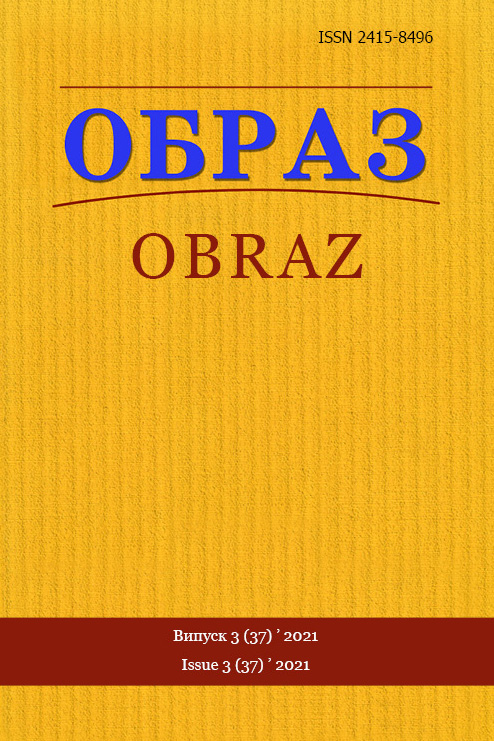Abstract
The purpose of the study is to determine the features of the interaction of factors of social and communication activities in the context of modern media. It is noted that the audience does not trust the propaganda, but trusts the media, which are carriers of a particular propaganda. The content information of the media is analyzed through the prism of the phenomenon of communication reflux. It is noted that communication in its real functional capacity, pursuing the interests of the future, is reduced for the present, for the current needs of the audience. The audience does not have the opportunity to react to the effects, to structural manipulation, to the processes that may lead to the cessation of the supply of mass media distorted reality that is spreading in society.
References
1. Appadurai, A. (1996), Modernity at Large: Cultural Dimensions of Globalization, Minneapolis, 229 p.
2. Holmes, D. (2005), Communication Theory. Media, Technology, Society, London, Thousand Oaks, New Delhi, 272 p.
3. Callon, M. & Latour, B. (1981), Unscrewing the Big Leviathan: How Actors Macro-Structure Reality and How Sociologists Help Them to Do So, 303 p.
4. Aliushyna, N. «Problems of communication effectiveness in the life of a society», NADU pry Prezydentovi Ukrainy [NAPA under the President of Ukraine], PDF.
5. Baudrillard, J. (1999), «Requiem for the mass media: [trans. Fr.]», Poetika i Politiki: Almanah Rossiysko-frantsuzskogo Tsentra Sotsiologii i Filosofii i IS RAN [Poetics and Politics: An Almanac of the Russian-French Center for Sociology and Philosophy and the IAS of the Russian Academy of Sciences], ISO; Alatea, SPb, Moscow, pp. 193–226.
6. Bondarenko, J.S. (2017), An Alternative Press of Modern Germany (Features of Functioning, Editorial Policy, Place in the National Media System), Abstract of the PhD diss. (Sciences of Social Communications), Ivan Franko Lviv National University, 19 p.
7. Wareh, N.V. (2014), Formation of Ethno-cultural Stereotypes in High-Quality British Press: Structural, Functional and Informative Features, Abstract of the PhD dis. (Sciences of Social Communications), O. Gonchar Dnipropetrovsk National University, 20 p.
8. Verbitskyi, P. (2017), «Corporate monopoly on information as a factor of the information strategy of the state», Zbirnyk pracz NDI doshkilnoyi osvity [Compilation of Works of the Research Institute of Preschool Studies], LNBU, Lviv, no. 7 (25), pp. 288–298.
9. Interaction. Wikipedia, available at: https://uk.wikipedia.org/wiki/Interaction.
10. Zelinska, N.V. (1995), «The publicistic nature of Ukrainian scientific prose (attempt of a retrospective review)», Zhurnalistyka [Journalism], Taras Shevchenko National University of Kyiv, no. 2, pp. 230–239.
11. Zolyak, V.V. (2007), «Convergence as a universal discovery of the coincidence of common features», Zbirnyk Prats Naukovo-Doslidnoho Tsentru Periodyky Lvivskoi Naukovoi Biblioteky im. V. Stefanyka [Collection of Works of the Research Center of Periodicals of the V. Stefanyk Lviv Scientific Library], Lviv, no. 15, pp. 139–145.
12. Ivanov, V.F. (2003), Sociology of Mass Communication: a Textbook, Cherkasy State University, Cherkasy, 193 p.
13. Kostenko, N. & Makeev, S. (2014), «Conclusion: To the sociology of mistrust», Society Without Trust, in Golovaki, E., Kostenko, N., Makeyev, S. (Eds.), IS NANU, Kyiv, pp. 319–330.
14. Kostenko, N. (2014), «Media dynamics: trends and deviations», Vectors of Changes in Ukrainian Society, in Vorona, V. M., Shulga, M. O (Eds.), IS NANU, Kyiv, pp. 326–348.
15. Kuznetsova, T.V. (2010), Axiological Models of Mass Media Information: Communicativeconceptual Approach, Abstract of the PhD dis. (soc. sci.), Taras Shevchenko National University of Kyiv, Kuiv, 31 p.
16. Latour, B. (2014), Reassembly of the social: Introduction to Actor-network Theory, Publishing House of the Higher School of Economics, Moscow, 384 p. 17. Luman, N. (2005), «The reality of the media», in Kiliadiushov, O.V. (Ed.), Electronic publication : Center for Humanitarian Technologies, available at: http://gtmarket.ru/laboratory/ basis/3001.
18. McQueil, D. (2010), Theory of Mass Communication, Chronicle, Lviv, 538 pp.
19. McLuhan, M. (2007), Understanding Media: External Extensions of Man, Kuchkovo field, M., 464 p.
20. Maturana, U. (1995), «Biology of cognition», Yazyik i Intelekt [Language and Intellect], Progress, M., pp. 95–142.
21. Mihailin, I.L. (2009), «Information image as a communicative category», Zbirnyk Kharkivskoho istoryko-filolohichnoho tovarystva [Collection of the Kharkiv Historical and Philological Society], New series, vol. 13, рр. 137–150.
22. Popper, C. (1994), An open society and its enemies. T. I. In the captivity of Plato’s charm, Fundamentals, Kyiv, 444 p.
23. Potiatynyk, B. (2004), Media: Keys to Understanding, PAIS, Lviv, 312 p.
24. Pocheptsov, G.G. (2000), Communicative Technologies of the Twentieth Century, Reflbeech; Wackler, Kyiv, 352 p.
25. Reflux. Wikipedia, available at: https://uk.wikipedia.org/wiki/Reflux.
26. Rizun, V.V. (2003), Masses: Texts of Lectures, Taras Shevchenko National University of Kyiv, Kyiv, 116 p.

This work is licensed under a Creative Commons Attribution 4.0 International License.

